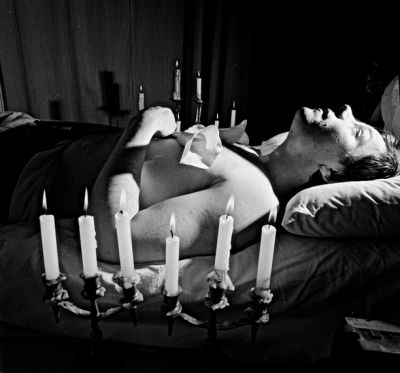 Like many traditions in Irish culture, the wake is a combination of pre-Christian customs and Christian rituals. While it sprang from original traditions of keeping watch over the dead, variations of the practice are still widely observed today. Whether in Ireland, the British Isles, the United States or other parts of the world, people of Irish descent carry on some form of both mourning and celebrating the lives of departed loved ones.
Like many traditions in Irish culture, the wake is a combination of pre-Christian customs and Christian rituals. While it sprang from original traditions of keeping watch over the dead, variations of the practice are still widely observed today. Whether in Ireland, the British Isles, the United States or other parts of the world, people of Irish descent carry on some form of both mourning and celebrating the lives of departed loved ones.
Original Observances Involved Keeping Watch Over the Dead
According to the American Heritage Dictionary, the term “wake” is derived from the Old English words “waccan” and “wacian,” which mean “to wake up” and “to keep watch” respectively. Originally, the term referred to prayer vigils held on the feast days of Christian saints. However, it was later applied to Celtic customs in which family kept watch over the body of a deceased loved one until it could be buried.
On its website, Funeralwise cited a 1973 book “Of Irish Ways” by Mary Murray Delaney that reported extensively on Irish customs, including wakes. The text details that for Irish wakes, the body was tended to by neighbor women who washed and then draped it in white linen before surrounding it with lit white tapers. As part of the preparations, all clocks in the house were stopped, and every mirror was either covered or turned around. Once friends and family gathered, open lamenting began, and men were invited to take a puff of tobacco provided to drive away evil spirits with its smoke. Meanwhile, loved ones would also recite poetry about the deceased.
A more widely known aspect of the Irish wake is the merrymaking involved. Family and friends of the departed engaged in dancing, drinking and playing games during the wake period, which customarily lasted between two to three days. Also, they shared stories with each other about the deceased person. While these customs may seem unusual, they may have a practical reason behind them: to help mourners stay awake for the entire time.
The Irish Wake in the 21st Century
In Ireland, funerary customs vary widely. The Journal.ie reported in a November 2015 article that while observance of the Irish wake has declined in rural areas of the country, it remains steady in large cities such as Dublin. The family’s circumstances and wishes often dictate how final arrangements are carried out. For example, some opt out of having the body remain in the house for emotional reasons but still might hold a gathering for mourners. In other cases, they may only hold a Catholic funeral for the deceased. However, some still hold traditional wakes prior to the funeral.
Modern interpretations of the Irish wake in the United States mostly emphasize giving the deceased loved one a proper sendoff. In 2009, Irish Central reported on Steven and Cathy Jo Smith, two Irish-American storytellers from Columbus, OH who help keep the tradition alive. As part of their travels, the couple frequently appears at Irish festivals to educate about the custom. Because of their expertise, the Smiths are often contacted by funeral homes asking for advice on how to properly conduct an Irish wake. In the article, Steven Smith opined that the wake was a healthy way to give family and friends the opportunity to mourn the deceased while celebrating their lives in a joyous way.
A Meaningful Way of Dealing With Death
The Irish wake is just one example of how human beings have crafted customs to deal with the practical, emotional, psychological and spiritual aspects of death. There is something to be said for its approach of both mourning someone’s passing while celebrating his or her life. This can provide a needed sense of closure while permitting for the full range of human emotions to be expressed.
Add Your Comment